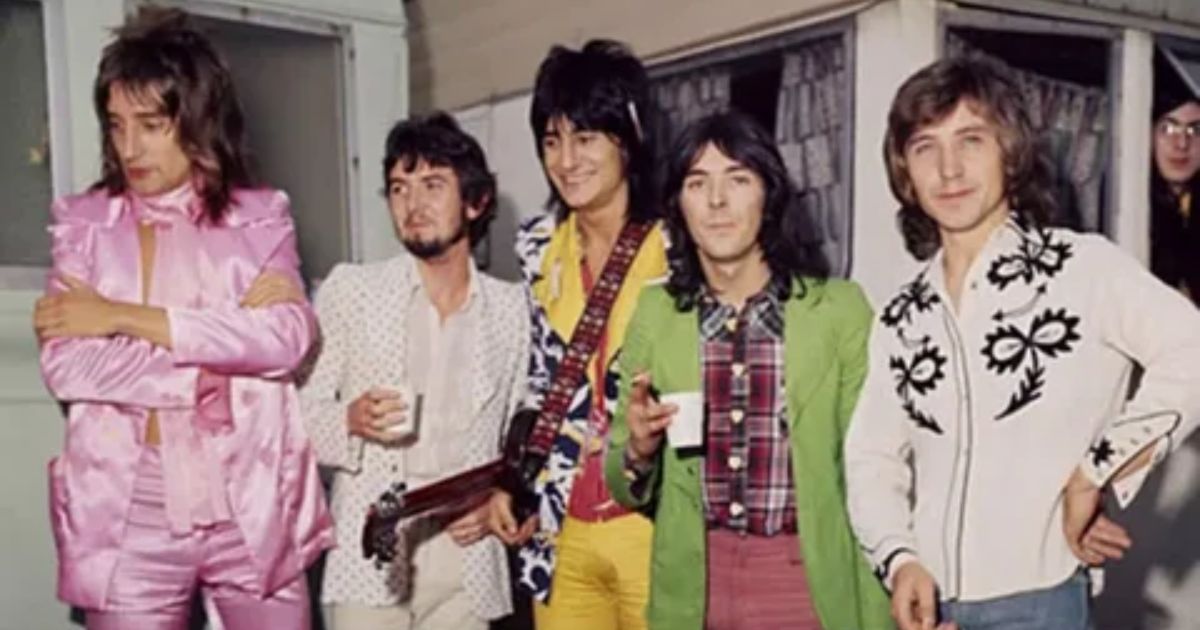The Faces Band is one of the most legendary rock groups in history. Their energy, passion, and unique sound made them stand out. With Rod Stewart’s powerful voice, Ronnie Wood’s guitar skills, and the contributions of other talented members, they created music that fans still love today. Their live performances were full of excitement, and their albums remain classics. Even after so many years, their influence on rock music continues.
The band’s success also brought them financial rewards. Over the years, their music and legacy have contributed to a strong net worth. Rod Stewart, for example, has an estimated net worth of $300 million, making him one of the richest rock stars. Other members also gained wealth and recognition for their contributions. Despite changes in the lineup and personal challenges, their impact remains strong. The Faces Band’s legacy will continue to inspire new generations of music lovers.
Profile Summary
| Category | Details |
| Band Name | The Faces |
| Formation Year | 1969 |
| Origin | London, England |
| Original Members | Rod Stewart, Ronnie Wood, Ronnie Lane, Ian McLagan, Kenney Jones |
| Previous Name | Small Faces |
| Key Genre | Rock, Blues, Folk |
| Lead Vocalist | Rod Stewart |
| Guitarist | Ronnie Wood |
| Bassist & Songwriter | Ronnie Lane |
| Keyboardist | Ian McLagan |
| Drummer | Kenney Jones |
| Major Songs | “Stay with Me,” “Ooh La La,” “Too Bad,” “Debris,” “Cindy Incidentally” |
| Rod Stewart’s Entry | 1969 (Joined from Jeff Beck Group) |
| Ronnie Wood’s Entry | 1969 (Joined from Jeff Beck Group) |
| Ronnie Lane’s Departure | 1973 |
| Notable Instrument Used | Hammond Organ (Ian McLagan) |
| Rod Stewart’s Post-Band Career | Successful solo artist spanning rock, pop, and older music styles |
| Ronnie Wood’s Post-Band Career | Joined The Rolling Stones |
| Ronnie Lane’s Post-Band Career | Pursued a solo career in folk and roots music |
| Ian McLagan’s Post-Band Career | Session musician and solo artist |
Who is Faces Band?
The Faces Band was a British rock band formed in London in 1969. They became one of the most influential rock bands of their time. With Rod Stewart, Ronnie Wood, Ronnie Lane, Ian McLagan, and Kenney Jones, they created a sound that was powerful and unforgettable. Their mix of rock, blues, and folk music made them unique.
What set The Faces apart was their raw energy and electrifying performances. Their music wasn’t just played; it was felt. Rod Stewart’s soulful voice, combined with Ronnie Wood’s guitar skills, gave the band a special identity. They became famous for their live shows, hit albums, and timeless songs. Even today, their influence can be heard in rock music.
Must Read This Blog.. What Luxury Cars Does Andrew Tate Own?
The Faces Band’s Formation
The Faces Band was formed in 1969 and quickly became one of the most influential rock bands of the 1970s. Their journey began when members of Small Faces joined forces with new talent, shaping a new era of rock music. Known for their energetic performances and unique blend of blues, rock, and folk, the band carved out a distinct identity in the music industry. Their ability to connect with fans through raw emotion and powerful lyrics made them stand out in an era of evolving rock music.
Despite facing challenges along the way, the band members shared a deep passion for music that kept them together. Over time, they released several hit albums, gaining recognition for their innovative sound. With a combination of strong vocals, mesmerizing guitar work, and rhythmic brilliance, The Faces quickly rose to prominence and established themselves as rock legends.
Origins as Small Faces
The story of The Faces began with Small Faces, a mod-influenced rock band formed in 1965. Led by Steve Marriott, the group was known for their psychedelic sound and chart-topping hits like Itchycoo Park. Their music blended soulful melodies with powerful instrumentals, making them a standout act in the 1960s rock scene.
However, by the late 1960s, the band faced creative differences. Steve Marriott left to form Humble Pie, leaving the remaining members to rethink their future. This departure marked the beginning of a new chapter, one that would lead to the creation of The Faces.
A Turning Point in 1969
In 1969, a major shift occurred when Rod Stewart and Ronnie Wood joined the band. Their arrival injected a fresh musical energy, setting the stage for a new sound. Unlike Small Faces, which had a mod-rock influence, The Faces leaned toward a bluesy, hard rock style.
The addition of these new members not only transformed the band’s sound but also their identity. They moved away from their psychedelic roots and embraced a more raw, unfiltered approach to rock music. This shift played a key role in their growing popularity and long-lasting legacy.
New Members Join
With the arrival of Rod Stewart and Ronnie Wood, the band underwent a complete transformation. Rod Stewart, with his gravelly voice, became the lead vocalist, while Ronnie Wood’s guitar skills added depth to their sound. Their chemistry with existing members Ronnie Lane, Ian McLagan, and Kenney Jones created an unstoppable force in rock music.
This new lineup brought a sense of excitement and spontaneity to the band. Their live performances were filled with high energy, making them one of the most electrifying acts of their time. The chemistry between the members was undeniable, which helped in their musical success and influence on future rock bands.
Rebranding as The Faces
With the changes in their lineup, the band decided to rebrand themselves as The Faces. The name change signified their new direction and their departure from the mod scene of Small Faces. The transition allowed them to embrace a grittier, blues-infused sound, making them pioneers of the hard rock movement.
This rebranding helped them build a strong identity, differentiating them from their past. Their music started gaining massive popularity, with their albums and singles topping charts in both the UK and the US. This period marked the beginning of their golden era.
Setting the Stage for Success
As the band refined their sound, they released several groundbreaking albums. Hits like Stay With Me and Ooh La La became anthems, cementing their place in rock history. Their blues-infused rock and raw performances won them legions of fans worldwide.
Despite their success, internal struggles and creative tensions began to emerge. However, their music remained iconic, inspiring generations of musicians. Even after their eventual breakup, their legacy continues to influence the rock genre.
The Core Members and Their Contributions
1. Rod Stewart The Iconic Voice
Rod Stewart became the voice of The Faces, bringing his distinctive raspy vocals to the band. His charismatic stage presence and soulful delivery made their music unforgettable. With hits like Stay With Me, he defined their signature sound.
Even after the band split, Rod Stewart’s solo career soared, making him one of the best-selling artists of all time. His time with The Faces shaped his style, contributing to his massive success in later years.
2. Ronnie Wood The Guitar Maestro
Ronnie Wood’s exceptional guitar skills gave The Faces their unique sound. His ability to blend blues and rock made their music stand out. His playing style influenced many future rock guitarists.
After The Faces disbanded, Ronnie Wood joined the Rolling Stones, further cementing his status as a guitar legend. His contributions to rock music remain legendary.
3. Ronnie Lane The Heart of The Band
Ronnie Lane played bass and was the soul of The Faces. His songwriting skills brought depth and meaning to their music. He had a unique ability to craft heartfelt lyrics.
Even after leaving the band, Ronnie Lane continued making impactful music, showcasing his musical genius through solo work and collaborations.
4. Ian McLagan The Keyboard Wizard
Ian McLagan’s keyboard playing added a distinct flavor to The Faces’ music. His ability to create memorable melodies gave their songs an unforgettable touch.
His talent was widely recognized, leading him to collaborate with rock legends like The Rolling Stones and Bob Dylan.
5. Kenney Jones The Rhythmic Backbone
As the drummer, Kenney Jones provided the powerful beats that drove the band’s music. His skillful drumming gave The Faces their signature energy.
After the band’s breakup, he played with The Who, continuing his remarkable career in rock music.
Dynamics Within the Faces Band
Collaborative Spirit
The Faces were known for their strong teamwork. Each member brought their unique talent, making their music rich and dynamic. Their ability to work together made them one of the greatest rock bands of their time.
Live Performances: A Unique Experience
Their concerts were legendary, filled with energy and raw emotion. They were known for their wild stage presence, making every show a memorable experience.
Balancing Personalities and Styles
Despite differences in style and personality, the band members managed to create timeless music. Their shared passion kept them together during their peak years.
Key Albums as Collaborative Efforts
Albums like A Nod’s As Good As a Wink… to a Blind Horse showcased their chemistry and collective genius. Their music continues to influence modern rock artists.
Collaborative Spirit:
- The Faces were a group of talented musicians who worked well together.
- Rod Stewart’s vocals and Ronnie Wood’s guitar became a key part of their live shows.
- Ronnie Lane wrote songs and played bass, adding depth to the music.
- Ian McLagan played keyboards, giving each track a special feeling.
- Kenney Jones, the drummer, kept a steady rhythm, allowing others to experiment.
Live Performances: A Unique Experience:
- The Faces were known for exciting live performances, where each member had their chance to shine.
- Their concerts were full of energy, improvisation, and humor.
- Rod Stewart interacted with the crowd while the band played loosely but still stayed together.
- The band trusted each other, which helped them create spontaneous and memorable performances.
Balancing Personalities and Styles:
- Each member had their own unique style, but they blended well together.
- Ronnie Lane’s quieter style balanced Rod Stewart’s bold stage presence.
- Ronnie Wood’s fiery guitar and Ian McLagan’s soulful keyboard kept the music interesting.
- This mix of different personalities made The Faces stand out in the 1970s rock scene.
Key Albums as Collaborative Efforts:
- Albums like “A Nod Is as Good as a Wink… to a Blind Horse” showed their teamwork.
- Each song reflected the band’s combined effort, with no one member overpowering the others.
- Their music was built on trust and respect, giving The Faces a sound that was all their own.
Conclusion
The Faces Band made a lasting impact on rock music. Their unique sound, energetic performances, and strong chemistry set them apart. Rod Stewart’s powerful voice, Ronnie Wood’s guitar skills, and the talent of all members made them unforgettable. They blended rock, blues, and folk in a way that felt fresh and exciting. Their music still inspires new artists today. Even though they disbanded, their legacy remains strong. Fans continue to listen to their songs and celebrate their contributions to rock history.
Over the years, the Faces Band members have achieved huge success. Rod Stewart’s net worth is over $300 million, while Ronnie Wood’s net worth is around $200 million. Kenney Jones, Ian McLagan, and Ronnie Lane also had successful careers. Their music still sells, and their influence continues to grow. The Faces’ impact on rock and roll is undeniable. Their songs, style, and performances have stood the test of time.
FAQs
What was Rod Stewart’s role in The Faces?
Rod Stewart was the lead vocalist, known for his soulful and raw voice, which became the band’s defining feature.
Who was the guitarist in The Faces?
Ronnie Wood was the guitarist, known for his energetic and versatile guitar playing that blended rock, blues, and folk.
Did The Faces have any famous songs?
Yes, songs like “Stay with Me” and “Ooh La La” became rock anthems, showcasing the band’s unique sound.
When did The Faces disband?
The Faces disbanded in 1975 after achieving significant success, with members pursuing individual projects.
What is The Faces’ legacy in music?
The Faces left a lasting impact on rock, with their genre-blending style and energetic performances continuing to inspire musicians











